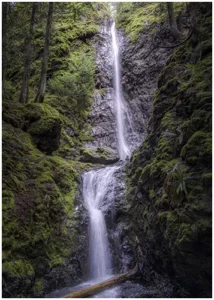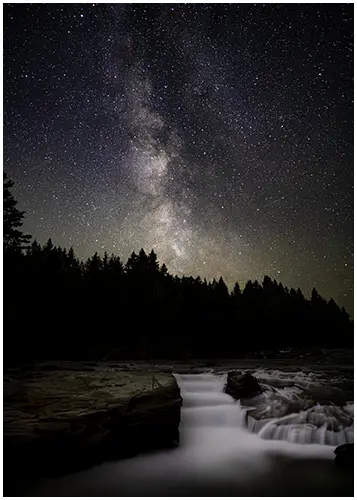
Waterfall Camera Settings Sunlight vs Shade Guide: (Pro Tips)
As a passionate waterfall photographer, I’ve discovered that exposure time and amount of light, be


When capturing moments with a camera, digital or image noise can be a common challenge that affects the quality of photos. Factors such as high ISO, poor lighting conditions, and sensor size influence noise, which is characterized by random variations in color that appear as grainy textures. In this article, we’ll explain the types of digital noise, such as luminance, colour, and quantization noise, and dive into the impact it has on image quality.
Additionally, we’ll discuss methods to reduce noise, such as adjusting ISO settings, improving lighting, and using noise reduction software, to help enhance the visual appeal of your photos.
Image noise in photography manifests as speckles or graininess, similar to film photography or film grain in analog cameras. Darker areas or under-resolved meshes within digital images often display these unwanted artifacts, a common issue in long-exposure shots. Digital noise disrupts the uniformity of photos, leading to a less polished and professional look created by two types of noise: chrominance and luminance.
In low-light conditions, you may notice grainy or speckled textures in your pictures. This phenomenon is primarily due to the camera’s struggle to interpret information accurately in poor illumination. The appearance of digital noise becomes more prominent as the ambient light decreases, resulting in a diminished quality that distracts from the photo’s main subject.
Several factors exacerbate digital noise in photography. High ISO intensifies the signal from the camera sensor, leading to an increase in noise. Similarly, inadequate lighting conditions force the sensor to overwork, increasing the chances of noise penetration. Moreover, a smaller sensor tends to be more susceptible to noise because it gathers less light, generating deficits that materialize as noise.
The industry standard for photo enlargement is getting better. Download your free trial today!
Luminance noise appears grainy as a result of brightness fluctuations across the image, a type of pattern noise seen often in photos. It primarily affects the light and dark areas, making the subject appear less defined and crisp. Monochrome images frequently emphasize this type of noise by minimizing color distractions and highlighting luminance discrepancies.
Chrominance noise introduces colour-related imperfections in photos, often perceived as misplaced speckles of colours where they don’t belong. This type of noise is more noticeable in high-contrast settings and can distract viewers from the intended visual narrative in photos. By distorting colour integrity, chrominance noise can ruin the harmony, creating off-putting palettes that disrupt the visual flow.
Quantization noise arises during the analogue-to-digital conversion (ADC) process. As the camera sensor converts continuous signals into digital values, small errors can occur, leading to quantization noise. This type of noise generally affects the finer details and gradients in an image and can be particularly disruptive when aiming for high accuracy and detail in digital photographs.
In the quest for perfection, digital noise can sabotage your efforts, degrading the quality and detail of your photographs
...Bob
The presence of digital camera noise decreases the overall sharpness and clarity, obscuring finer details that are crucial for high-quality imagery. This can be especially visible in landscape and architectural photography, where intricate patterns are key, making any amount of noise more noticeable. The resulting images often lack the depth and detail that might otherwise render them visually captivating and professionally acceptable.
When digital camera noise becomes excessive, it corrupts colours and textures, giving the image a surreal, and often unwanted, appearance. Random splashes of colour replace natural hues, and textures lose their smooth transitions, creating a distracting patchwork that distances the viewer from the intended visual experience. This effect can particularly distort portraits where skin tones need to remain consistent, but the presence of random noise can make this difficult.
Digital camera noise significantly undermines the aesthetic value of a photograph in digital photography. The presence of noise can make the imagery look amateurish, turning viewers away. Noise dilutes the visual impact that could otherwise engage and captivate the audience, thereby reducing the artistic and communicative power of the photograph. Consequently, photographs marred by noise often fail to convey the intended emotional or visual message, as the image noise affects the overall quality.
One effective way to minimize digital camera noise is to use low ISO settings. ISO sensitivity in cameras directly correlates with noise levels: the higher the ISO, the greater the amount of noise due to image noise. By opting for a low ISO, you allow the sensor to collect cleaner light signals, thereby reducing the chances of noise. This is particularly useful in well-lit environments where low ISO levels can still produce adequately exposed images.
Improving lighting conditions can significantly help reduce digital camera noise. Adequate illumination provides the sensor with sufficient light data, minimizing the need for high ISO settings while enhancing the overall quality. Natural light is preferable, but in its absence, auxiliary lights like LED panels or diffused flash can serve to illuminate the subject effectively, thereby curbing noise.
Post-processing software like Adobe Lightroom and Skylum Neo offers noise reduction tools that can clean up noisy images by addressing various forms of image noise. These tools employ sophisticated algorithms to identify and minimize both luminance and chrominance noise, which are types of image noise. While capturing clean images from the start is ideal, these tools offer a viable option for rescuing photos compromised by digital camera noise.
When digital noise is present, it can significantly degrade the sharpness and clarity of an image. Noise obscures fine details, resulting in a less defined and softer photograph. This reduction in detail is particularly noticeable in areas that would otherwise be crisp and sharp, such as the edges and textures of objects. Photographers aiming for high-resolution and detailed shots often find digital noise to be a major hindrance to achieving the desired image quality.
Excessive digital noise not only affects brightness variations, but also distorts colors and textures within the image. This chrominance noise generates color speckles that disrupt the photo’s natural look, a common issue in digital photography where fixed pattern noise may be present. What should be smooth gradients or subtle textures can turn into a patchwork of distracting colour variations caused by noise in digital photos. This makes the image appear unnatural and detracts from the photographer’s intent to capture an accurate and aesthetically pleasing representation of the scene.
Beyond the technical imperfections, digital noise can severely diminish the overall aesthetic appeal of a photograph. The speckled and uneven appearance caused by noise draws the viewer’s attention away from the subject matter and composition. This compromises the image’s visual impact, rendering it less engaging and less effective in conveying the photographer’s vision. In professional and artistic settings, maintaining high image quality is crucial, and digital noise often stands in the way of achieving that goal.
One effective method to reduce digital noise is to use lower ISO settings. The ISO setting on a camera determines its sensitivity to light; higher settings can capture more light in darker environments, but at the cost of increased noise. By selecting a lower ISO, you can produce cleaner images with less noise, especially in well-lit conditions. Photographers often strive to use the lowest ISO possible to achieve the best image quality, even if it means compromising on shutter speed or aperture settings to maintain proper exposure.
Lighting plays a crucial role in image quality and noise reduction. Shooting in better lighting conditions, such as natural daylight or with enhanced artificial lights, allows the camera to operate at optimal settings. Good lighting enables the use of lower ISO settings and faster shutter speeds, both of which contribute to less noise. Additionally, well-lit scenes can improve the performance of the camera sensor, yielding clearer and more vibrant images. Thus, photographers should prioritize lighting to minimize image noise and enhance overall photo quality.
When digital noise is unavoidable during shooting, post-processing software can be a valuable tool for noise reduction. Programs like Adobe Lightroom and Photoshop offer advanced noise reduction features that can smooth out grainy textures and enhance image clarity, even in long-exposure shots. These tools work by identifying and reducing noise while preserving important details, resulting in a cleaner and more polished final image thanks to noise reduction software. While it’s ideal to minimize noise during capture, post-processing offers a safety net for improving image quality after the fact.
In conclusion, digital noise in photography refers to random variations in brightness or colour that can affect image quality. This noise can manifest as grainy or speckled textures, compromising a photo’s sharpness and clarity due to image noise. Factors like high ISO settings and poor lighting conditions contribute to digital noise, impacting the overall aesthetic appeal of an image. To reduce digital noise, photographers can adjust ISO settings, improve lighting conditions, and use noise reduction tools in post-processing to avoid noise. By understanding and addressing digital noise in digital photos, photographers can enhance the quality of their images and create visually appealing photos.
To prevent digital noise in photography, use a low ISO setting, ensure proper lighting, and use a high-quality camera sensor. Additionally, apply noise reduction techniques in post-processing software and avoid overexposing or underexposing shots.
A photo with a lot of digital noise appears grainy or speckled, especially in low-light areas. It shows random variations in brightness or color, reducing the image’s clarity and detail.
The difference between film noise and digital noise is that film noise, or grain, results from the chemical process of film development, while digital noise arises from electronic interference in digital sensors, often appearing as random speckles or color distortion in digital images.

As a passionate waterfall photographer, I’ve discovered that exposure time and amount of light, be

Do you remember that perfect shot you took? But then, post-processing was a struggle? You’re

For me, photography is truly magical. It simply transcends from looking at the world to